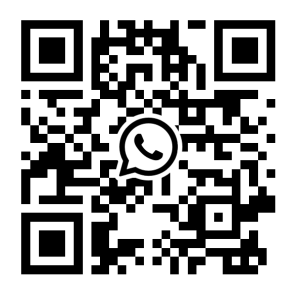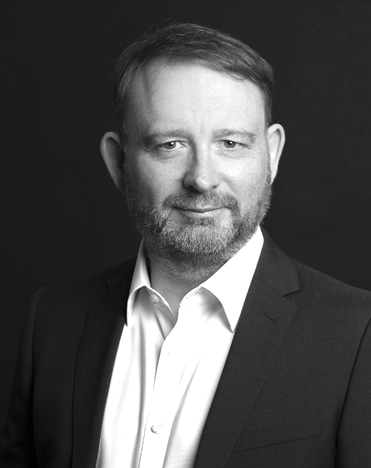Support To Create HR OKRs That Will Have An Impact
Page Highlights
- Important introduction notes about HR processes and KPIs
- HR OKR examples to inspire yours
- More help if you need it with your OKRs or other team OKRs
- Top 5 tips for creating OKRs for HR
Human Resources are responsible for a wide variety of systems, processes and employee related KPIs. All of which are designed to help the business succeed and employees thrive.
The processes include:
- Recruitment & Selection
- Hiring & On-boarding
- Training & Development
- Employee Relations
- Performance Appraisal / Reviews
- Benefits Administration
- Performance Management
- Leaver Off-boarding
The KPIs are diverse as well and include KPIs in broad categories like: Retention, Engagement, Productivity, Learning & Development, Achievement, and Wellbeing.
Where as KPIs might provide you with a view on how healthy specific areas and processes are, OKRs are a response to the question, what should you focus on most in the coming year or quarter. What does the end-state of what you want to achieve look like?
This is why KPI Management and OKR Management go hand-in-hand in HR and in every other team. If you are running a healthy recruitment and selection process and you’re getting great candidates to apply, for an acceptable cost, and they are accepting and staying beyond a probation period, and you’ve got the KPIs to prove it, would you make any of that an OKR? No, not really. Would you like some recognition that keeping that all running and healthy takes effort, skill and hard work? Yes you would.
This is why ZOKRI allows individuals to own and collaborate on KPIs / Health Metrics, OKRs and Initiatives. Like with every team you support, your story involves a lot of different types of contributions, and if you only had your OKRs to go by you would either create lots of OKRs – this is bad!, or lots of what you do and achieve would not be seen and recognised.
When you create your HR OKRs you will be sharing your biggest priorities and make a public commitment to an outcome. The commitments to a future desirable end-state, that is hopefully measurable and ambitious, are what difficult OKRs are about. For Human Resources teams these are likely to be geared towards improving underperforming KPIs or improving HR systems and processes.
The activities you will do to make the improvements you are targeting are called Initiatives. In Human Resources these are really diverse and can range from implementing new OKR software like ZOKRI to creating new surveys to gather baselines for KPIs you think matter.
Relevant Roles
- Chief People Officer (CPO)
- VP Human Resources
- HR Director
- Head of Talent
- HR Manager
- HR Executive
Here you will find some examples of typical HR OKR goals. Remember that OKRs were NOT created for ‘Business As Usual’ Goals, projects you are going to undertake, or really long-term goals.
On the link below you will find a great OKR resource and guide for anyone that’s new to OKR. Even if you’ve used OKRs in the past you are going to learn new things – promise. It also has a full story of an OKR Cycle with OKR examples that go from strategy and Company OKRs to team and cross-functional OKRs – including Human Resources. It will help you see how everything can fit together.
Most OKRs fail not because they’re too ambitious—but because they start too fast. Without psychological safety, outcome-focused goals rarely stick. Our approach helps teams build trust, shift mindsets, and unlock 3.5x better results by doing OKRs the right way, in the right order.
Easy To Understand HR OKR Examples
Before you look at these HR OKR examples – ask yourself if you’re a good fit for OKR and answer these questions:
- What are top 3 HR priorities right now?
- Which HR KPIs, systems or processes need most improvement in the next quarter and which can be maintained at the same level?
- Which other company or other departmental OKRs do you need to support?
OKRs For HR Examples
Priority Problem / Opportunity
The last employee survey had only 57% of people reported as ‘Very Happy’ and we need to increase that. Related to this we really need to get people to stay longer.
OBJECTIVE – Our people matter and we want and engaged employees – 2021
KEY RESULT 1 – 90% of Employees are Very Happy
KEY RESULT 2 – Average Length of Employment to increase to 1 Year
Priority Problem / Opportunity
Remote working has meant we’re having too many video calls, work / life balance has been lost – ZOKRI is the answer by the way!
OBJECTIVE – Have fewer better meetings – lots of meetings are not useful – Q2
KEY RESULT 1 – Reduce the average time spent in meetings per week from 10 hours from 15 hours
KEY RESULT 2 – Achieve a post meeting ROTI score of over 4
Priority Problem / Opportunity
We are committed to OKRs but our culture needs work. People are not comfortable with stretch goals and issues and problems are hidden not shared too often. We need to make it safer to set hard goal, safer to fail, and easier to share problems.
OBJECTIVE – Create strong foundations for OKR to thrive and OKRs will stick – 2021
KEY RESULT 1 – Improve Psychological Safety in all teams to ‘Really Secure’
KEY RESULT 2 – Coach all employees on how to plan to measure what matters and set OKRs
Priority Problem / Opportunity
Hiring is becoming more expensive, we’re not seeing enough good quality candidates so we’re not making enough offers either.
OBJECTIVE – More amazing candidates are saying yes and gaps are not there for long – Q2
KEY RESULT 1 – Reduce the Cost Per Hire to $5K this Quarter from $25K
KEY RESULT 2 – Increase % of Hires Referred to 50% this Quarter from ZERO
KEY RESULT 3 – Reduce the Average Time to Fill Job Vacancies to 25 Days from 50 Days
KEY RESULT 4 – Increase the Candidates Interviewed Per Hire to 4 from 2
KEY RESULT 5 – Increase our Job Offer Acceptance Rate % to 80%
Want to improve your current use of OKRs?
ZOKRI has spent years helping businesses of all sizes succeed with either a mix of coaching and software or self-serve OKR software with education and on-boarding support built in. We’ve become leaders at ensuring customers don’t just have OKRs, they have great OKRs, are feeling the full benefit, and employees understand and like the framework, and can see how it help them to succeed. This ground-up adoption matters to your long term success.
If you’d like to talk to us about OKRs, how best to implement them correctly, and learn how ZOKRI has helped companies successfully embed OKRs to improve alignment, engagement and performance, book a call, we’ve lots of valuable advice to share.
Leading By Example
As you’re in Human Resources you are definitely one of the teams that needs to be leading by example. Your OKRs for HR need to be great. The chances are that some of your OKRs may not be designed to be transparent and need to be confidential. The others can be and act as inspiration and tell everyone that topics like culture, wellbeing, and personal development matter and they are part of your goals and they align with that the company also wants to achieve.
So here are our top 5 tips for creating the best HR OKRs
- Have conversations with department heads and a good sample of the people they manage to find out what they think your priorities should be – hopefully you’re aligned.
- Check with your executive colleagues and check that these priorities align with theirs.
- Lead by example and show that it’s safe to be ambitious.
- Where possible embed metrics / KPIs that matter inside your Key Results.
- Share your plans or Initiatives that will help you achieve these goals and ask for ideas / inputs as well – everyone wants you to succeed.
Want to see a full OKR cascade, from Strategy to Departments and team OKRs?
OKR For HR – Conclusion
ZOKRI has worked alongside industry experts to create intuitive OKR software that provides HR teams with the tools and features to make OKR embedding and adoption easy in your company. With ZOKRI teams can measure, share and work on what matters, & improve performance quickly. A ZOKRI account ensures everyone knows and feels that they really matter.
See what best-in-class OKRs really look like. Download our comprehensive guide featuring a detailed OKR example that’s changing how organizations think about strategy execution.
"This isn't your typical OKR template - it's a masterclass in strategic thinking"
2024 Priorities & Plays
- Ensure you have a source of advantage, ideally a superpower.
- Get ahead of comp. and win the battle of customer value and experience.
- Ensure the people interacting with customers are part of your strategic discussions.
- Incorporating technological change - AI, Machine Learning, Automations. to compete on productivity, employee and customer experience.
- Develop and maintain a super healthy core business, this is the engine room of growth.
- Modernize approaches to strategy execution with better management systems.
- Lead on talent management, development, and hiring, and leverage employees uniquely human advantage in areas like creativity, empathy and relationship building.
The Good Strategy Test
- 2 - 4 mins
- Answer 7 questions and discover how good your strategic capability is, and where it might be improved.
Execution Capability Test
- 2 - 4 mins
- Answer 5 questions and discover how good your execution capability is, and where it might be improved.
Free Consultation
Meet Us
- Meet a few of the people you'd be working with.
- Ask questions.
- Share what you'd like to achieve.
- Find out how we'd approach the opportunity.
Who Will Be On The Call
- United Kingdom
Ashtead
KT21 1RZ
+44 20 7046 1328

- United States
New York
NY 10013
+1 646-718-4720
- ZOKRI helps leaders and teams achieve strategic goals using the OKR (Objectives & Key Results) framework. Our platform aligns strategy, goals, and people, fostering engagement and growth through comprehensive training and management systems.
© ZOKRI 2026 All rights reserved | Privacy Policy | Terms & Conditions | GDPR
Contacts Us
Tell us what you need. We'd be delighted to help.
"*" indicates required fields

